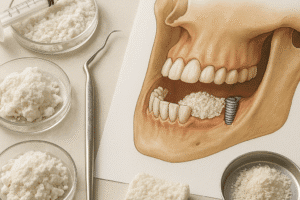The human skeleton is a dynamic organ system constantly undergoing repair and renewal. When fractures occur, the body initiates a complex cascade of cellular events to restore structural integrity. While surgical interventions and immobilization techniques are vital, the role of **nutrition** in supporting and accelerating bone recovery cannot be overstated. Adequate intake of specific macronutrients and micronutrients lays the foundation for effective **bone remodeling**, ensuring that newly formed tissue possesses strength and resilience. This article explores the key dietary factors and underlying mechanisms involved in optimal bone healing.
Macronutrients: Building Blocks for Bone Repair
Successful bone regeneration hinges on a balanced supply of energy and structural components. Three macronutrients—carbohydrates, fats, and **protein**—play distinct yet interrelated roles in the healing process.
Carbohydrates and Energy Provision
Carbohydrates serve as the primary fuel source for metabolically active cells such as **osteoblasts**, which proliferate vigorously at the fracture site. A moderate intake of complex carbohydrates (whole grains, legumes, and vegetables) maintains blood glucose within optimal ranges, preventing catabolism of essential proteins for energy.
Fats: Inflammation Modulation and Cell Signaling
Polyunsaturated fatty acids (PUFAs), particularly omega-3s, possess potent anti-inflammatory properties. By modulating cytokine release and prostaglandin synthesis, omega-3s support a balanced inflammatory response critical during the early inflammatory phase of bone repair. Sources include fatty fish, flaxseeds, and walnuts.
Protein: Framework for New Bone Matrix
Proteins supply amino acids necessary for collagen formation, the organic scaffold upon which mineral deposition occurs. A daily intake of 1.2 to 1.5 g/kg body weight is often recommended during fracture healing, surpassing standard dietary requirements. High-quality proteins (lean meats, dairy, legumes) ensure a steady supply of essential amino acids like proline and lysine, key precursors for **collagen** synthesis.
Vital Micronutrients in Bone Regeneration
Micronutrients govern enzymatic reactions, mineralization, and cellular communication. Among these, **calcium** and **vitamin D** are most renowned, yet magnesium, phosphorus, vitamin K, and trace elements also contribute significantly.
Calcium and Bone Mineralization
Approximately 99% of the body’s calcium resides in the skeleton. During consolidation of the fracture callus, calcium ions crystallize onto the collagen matrix, forming hydroxyapatite. Inadequate calcium intake prolongs healing and may compromise bone density. Adult recommendations range from 1,000 to 1,500 mg daily, delivered via dairy products, fortified plant milks, leafy greens, and certain fish.
Vitamin D: The Gatekeeper of Calcium Homeostasis
Vitamin D enhances intestinal calcium absorption and regulates parathyroid hormone (PTH) activity. Deficiency impairs mineralization, leading to osteomalacia-like conditions around the injury site. Sun exposure and dietary sources (fatty fish, egg yolks, fortified foods) should be optimized, with supplementation considered when serum 25(OH)D levels fall below 30 ng/mL.
Magnesium, Phosphorus, and Trace Elements
Magnesium serves as a cofactor for alkaline phosphatase, an enzyme crucial for matrix mineralization. Phosphorus combines with calcium to form the crystalline structure of bone. Trace elements like zinc and manganese facilitate collagen cross-linking and antioxidant defenses within the repair milieu. Incorporating nuts, seeds, whole grains, and lean proteins ensures adequate intake.
Metabolic Pathways and Hormonal Influences
Bone repair is orchestrated through a sequence of phases—inflammatory, reparative, and remodeling—each with unique metabolic demands. Nutrients interact with hormonal signals to fine-tune cellular activities throughout these stages.
Inflammatory Phase and Micronutrient Demands
Following injury, pro-inflammatory mediators recruit immune cells and clear debris. Antioxidant vitamins (C and E) mitigate oxidative stress, protecting newly forming cells. Vitamin C, in particular, is essential for hydroxylation of collagen molecules, solidifying the organic matrix foundation.
Reparative Phase: Angiogenesis and Osteogenesis
During callus formation, vascular endothelial growth factor (VEGF) stimulates new blood vessel growth. Iron and copper are vital for hemoglobin synthesis and angiogenic signaling. Simultaneously, growth factors like IGF-1 enhance **osteoblast** proliferation, reliant on amino acid availability and adequate caloric intake to avoid catabolic states.
Remodeling Phase: Final Sculpting of Bone
As woven bone transitions to lamellar structure, mechanical stability and nutrient flow guide the resorption and redeposition cycle. Balanced levels of vitamin K facilitate γ-carboxylation of osteocalcin, essential for binding calcium within the matrix. Ensuring sufficient intake supports the restoration of normal bone architecture.
Lifestyle Considerations and Supplementation Strategies
Beyond diet, lifestyle factors such as physical activity, sun exposure, and avoidance of smoking or excessive alcohol influence healing outcomes. Weight-bearing exercises, when cleared by a clinician, stimulate bone formation through mechanotransduction. Meanwhile, chronic alcohol consumption can disrupt vitamin D metabolism and impair collagen synthesis.
- Supplementation: Targeted supplements of calcium, vitamin D, and protein powders can address dietary gaps.
- Timing: Distributing nutrient intake evenly across meals enhances absorption and maintains **metabolism** at optimal rates.
- Hydration: Adequate fluid intake supports nutrient transport to the fracture site and removal of metabolic byproducts.
- Monitoring: Periodic blood tests for vitamin D, calcium, and inflammatory markers guide adjustments in nutritional therapy.
Integrating these nutritional and lifestyle strategies fosters an environment conducive to rapid and robust **healing**, empowering patients and clinicians to collaborate toward full recovery of bone function.













